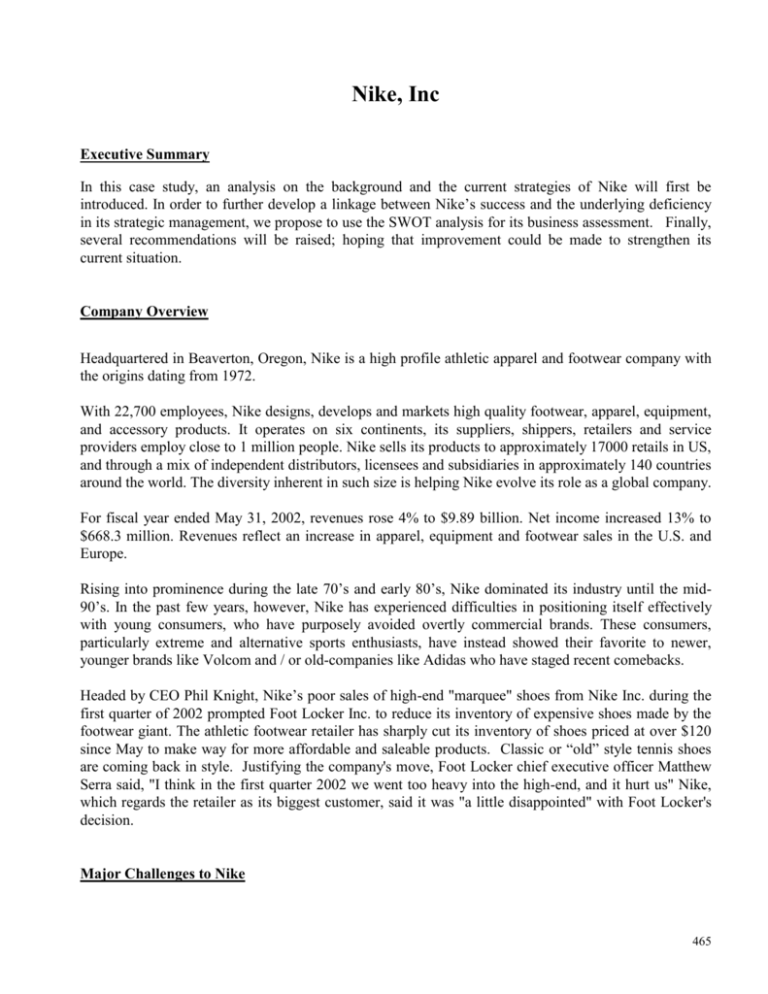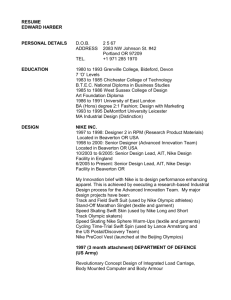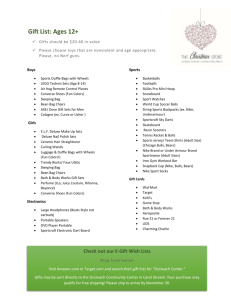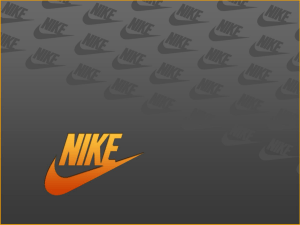NIKE, INC
advertisement

Nike, Inc Executive Summary In this case study, an analysis on the background and the current strategies of Nike will first be introduced. In order to further develop a linkage between Nike’s success and the underlying deficiency in its strategic management, we propose to use the SWOT analysis for its business assessment. Finally, several recommendations will be raised; hoping that improvement could be made to strengthen its current situation. Company Overview Headquartered in Beaverton, Oregon, Nike is a high profile athletic apparel and footwear company with the origins dating from 1972. With 22,700 employees, Nike designs, develops and markets high quality footwear, apparel, equipment, and accessory products. It operates on six continents, its suppliers, shippers, retailers and service providers employ close to 1 million people. Nike sells its products to approximately 17000 retails in US, and through a mix of independent distributors, licensees and subsidiaries in approximately 140 countries around the world. The diversity inherent in such size is helping Nike evolve its role as a global company. For fiscal year ended May 31, 2002, revenues rose 4% to $9.89 billion. Net income increased 13% to $668.3 million. Revenues reflect an increase in apparel, equipment and footwear sales in the U.S. and Europe. Rising into prominence during the late 70’s and early 80’s, Nike dominated its industry until the mid90’s. In the past few years, however, Nike has experienced difficulties in positioning itself effectively with young consumers, who have purposely avoided overtly commercial brands. These consumers, particularly extreme and alternative sports enthusiasts, have instead showed their favorite to newer, younger brands like Volcom and / or old-companies like Adidas who have staged recent comebacks. Headed by CEO Phil Knight, Nike’s poor sales of high-end "marquee" shoes from Nike Inc. during the first quarter of 2002 prompted Foot Locker Inc. to reduce its inventory of expensive shoes made by the footwear giant. The athletic footwear retailer has sharply cut its inventory of shoes priced at over $120 since May to make way for more affordable and saleable products. Classic or “old” style tennis shoes are coming back in style. Justifying the company's move, Foot Locker chief executive officer Matthew Serra said, "I think in the first quarter 2002 we went too heavy into the high-end, and it hurt us" Nike, which regards the retailer as its biggest customer, said it was "a little disappointed" with Foot Locker's decision. Major Challenges to Nike 465 A major issue in this case is the importance of marketing to athletic shoe companies. Since most of these companies contract with foreign manufacturers to make their products, marketing is the primary focus for the companies. Nike concentrates on superior technology and markets its products stressing the importance of technology for healthy exercise. Reebok's shoes are designed to make a fashion statement and marketing efforts focus on "freedom of expression." Most athletic shoe companies rely on sports stars to promote their products. As of mid-2002, classic, old-style athletic shoes are becoming very popular and Nike is somewhat behind competitors in providing these products. Social changes also have a significant impact on this industry. People are changing their lifestyles and are becoming more fitness conscious. The population is aging, as more citizens live well into their 80s. Baby boomers, currently in the 44-54 age group, are the largest wage-earning group among consumers. More young girls are involved in sports than ever before (approximately 1 in 3). All of these factors affect the decisions made by managers of athletic shoe companies. Social responsibility is another issue in the case. Issues such as the waste added to landfills, treatment of labor in developing countries, and recycling issues are the major issues of concern to consumers. Child labor producing athletic footwear in foreign countries also is an issue. In recent years, there has been growing international pressure on Nike to improve working conditions for its 500,000 factory workers. In Indonesia, contract workers for Nike earn $2.60 per day, or a total of $811 per year. C. Mission Statement (actual) To bring inspiration and innovation to every athlete in the world D. SWOT Analysis Strengths 1. Nike sells casual shoes in addition to athletic shoes by co-operating with Cole Haan and Tensile Air. 2. Research and development represents only a small proportion of costs, but this is enough to keep the company's products on the cutting edge. 3. Television ads are creative and use celebrity spokespersons effectively. 4. The accessories are very fashionable and take advantage of the Nike logo and name. 5. The logo is very recognizable. 6. The company offers a wide variety of models and styles for more than 24 different sports. 7. The strategy of contracting production to foreign manufacturers keeps capital investment costs low. 8. The company is building a competitive advantage in Europe, the Asia/Pacific region, and Latin America. 9. The company has advertising offices in international markets to take advantage of local talent. Weaknesses 1. Research and development costs increase the selling price of shoes. 2. Contracting the manufacture of shoes lengthens the channel of distribution and the final price of shoes to consumers is much higher that the manufacturer's cost to produce the shoes. 3.Research and development efforts focus on five years in the future. If other companies develop technology fast or consumer trends shift, Nike could lose a significant amount of research time/money. 4. Sports stars who become injured or retire from competition could negatively affect the company's sales. 466 5. Quality of supply is dependent on the contract manufacturer. 6. Response to social issues such as concern about working conditions in some foreign factories could negatively impact image. 7. Net income decreased 50 % in 1998, in large part due to sales problems in international markets. International sales began to rebound in 1999, but are not yet back to 1998 levels. 8. U.S. sales are significantly lower than they were in 1997. Opportunities 1. There are increasing international competitive opportunities in the Unified European market as well as in Asia and the former Russian republics. 2. The production costs are lower in Asian countries, e.g. China and Indonesia 3. Buyers are brand conscious. 4. Casual and sport wear is common in fashion. 5. People are living longer. 6. The peak earning years are 45 - 54 and the largest group of adult consumers is moving to this age group. 7. Two wage earner families can more easily afford higher priced athletic shoes. Threats 1. The industry is very competitive. 2. Most people do not exercise at the levels that are suggested by experts. 3. Overseas production is vulnerable to political and governmental unrest. 4. The major competitors are seen by many consumers as providing very similar products. 5. Economic conditions negatively affect spending for higher priced athletic wears. 6. The youth market is demanding other types of casual shoes instead of athletic shoes. 7. Economics in international markets are often very volatile. And the war in Iraq may further deter the world consumption and investment for a period D. Questions 1. Is Nike trying to supply products for too many sports? Should Nike narrow its product line in athletic shoes? 2. Is Nike taking the correct approach in marketing its shoes internationally? 3. What changes in product and advertising should the company pursue to appeal to the aging baby boomers? To generation Y? 4. How can Nike maintain a competitive advantage over Reebok? 5. Is Nike responding correctly to concerns about the treatment of employees in international manufacturing facilities? 6. How serious are the problems Nike has faced in the last five years? Can the company create growth that is profitable and sustainable? How can the company revitalize its U.S. footwear business? 7. How does the social responsibility negatively impact Nike? Suggest ways to reduce the pressure from social responsibility. 467 8. Suggest ways to avoid/ reduce the threats faced by Nike 468








